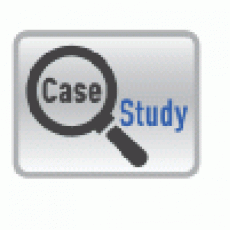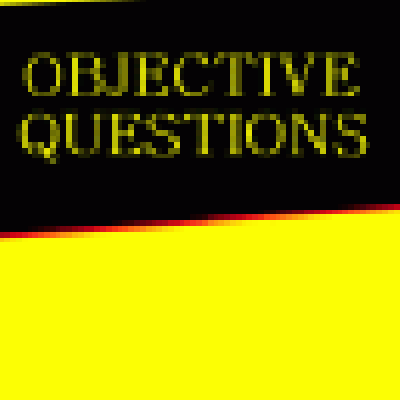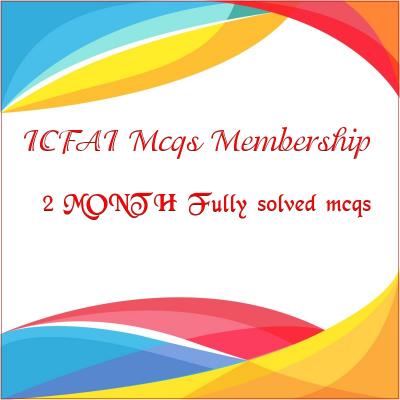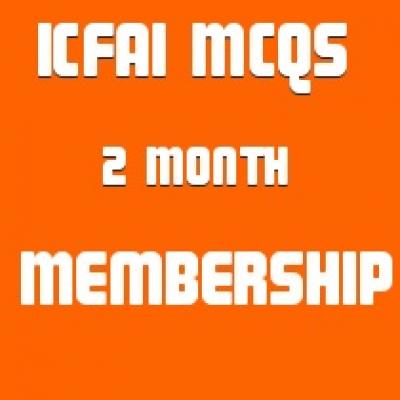SECURITY ANALYSIS AND PORTFOLIO MANAGEMENT
Price:
Rs500
Q1. Covariance of the returns of security i and market portfolio is 270. Standard deviation of market portfolio is 15. Calculate β of security i.
-
1.2
-
2.4
-
3.0
-
3.8
-
4.2
Q2. In an economy the level of confidence can be gauged by examining the following factors.
-
The current investment climate
-
The current capacity utilization
-
Overall economic conditions
-
Financial performance of companies
-
All of the above
Q3. Default free bonds can still have
-
Price change risk
-
Interest rate risk
-
Marketability risk
-
Political risk
-
All of the above
Q4. The analyst should take into account the following characteristics while evaluating a company for investment purpose.
-
Permanence
-
Labor conditions
-
Government policies and regulations
-
Past earnings performance and future expectations
-
All of the above
Q5. B1 and B2 group shares in BSE can be settled through
-
Carry forward settlement
-
Spot delivery
-
Hand delivery
-
Kerb trades
-
None of the above
Q6. Which among the following factors are considered while conducting five factor ROE analysis?
-
Pre-tax margin
-
Operating margin
-
Asset turnover
-
Total leverage
-
All of the above
Q7. The ratio of market capitalization to book value can be used as a proxy for
-
ROE
-
ROA
-
EBIT
-
EBDIT
-
None of the above
Q8. A stop loss order is given when the market is
-
Highly volatile
-
Experiencing a downtrend
-
Experiencing a bull run
-
Inactive
-
None of the above
Q9. The low exit and high entry barriers can be found in industries which have
-
Low and stable returns
-
Low but risky returns
-
High and stable returns
-
High but risky returns
-
None of the above
Q10. Which of the following companies deal in commodities?
-
HLL
-
Reliance
-
Wipro
-
Grasim
-
Both (b) and (d) above
Q11. Which among the following is unique to a security?
-
Risk-free rate
-
Risk premium
-
Rates of expected inflation
-
Nominal interest rates
-
None of the above
Q12. To prove the independent nature of price changes in stocks, analysts conduct which of the following tests?
-
Auto-correlation tests
-
Residual analysis
-
Event studies
-
Runs test
-
Both (a) and (d) above
Q13. A “Connected Person” according to the SEBI Regulations, 1992 is defined as
-
A company under the same management
-
A merchant banker or a share transfer agent or a broker
-
An employee of a public financial institution
-
The company’s banker
-
All of the above
Q14. The slope of the CAPM line is also referred to as the
-
Systematic risk
-
Market price of the risk
-
Unsystematic risk
-
Both (a) and (b) above
-
None of the above
Q15. The risk of the whole market as measured by ‘Beta’ is
-
1
-
0
-
-1
-
Greater than 1
-
None of the above
Q16. Securities which are plotted above the SML line are
-
Underpriced
-
Those whose intrinsic value is equal to the market value
-
Overpriced
-
Favorable investments
-
Both (a) and (d) above
Q17. In India, the secondary market for shares is regulated by
-
RBI
-
Ministry Finance
-
SEBI
-
Company Law Board
-
There is no regulatory authority
Q18. Banker’s acceptances are traded in
-
Money market
-
Capital market
-
Derivative market
-
Forex market
-
None of the above
Q19. Which among the following is/are market determined?
-
Havala rate
-
Carry forward margin
-
Badla charges
-
Making up price
-
None of the above
Q20. High growth rates in earnings and market shares is a characteristic of companies which are in
-
Maturity stage
-
Expansion stage
-
Pioneering stage
-
Declining stage
-
None of the above
Part Two:
Q1. Explain ‘Discretionary Order’, a type of order available to stock traders.
Q2. What does ‘β’ (Beta) mean in risk measurement?
Q3. Define ‘Liquidity’.
Q4. What is ‘Beta Control’?
Q5. Which company do you think in India confirms to the traditional explanation of why firms grow?
Q6. Which company do you think in India has improved its valuation after focusing on its core competencies.
Q7. How does the introduction of rolling settlement complement the stock being traded in the demat format?
Q8. What are the advantages to the company whose shares are traded in the demat form?
Q9. Investment in bond assures the investor a fixed return with some element of risk. Elaborate on the various risks involved in bond investment and recommend the techniques to reduce these risks.
Q10. Explain where in the companies resort to manipulative accounting techniques with respect to the following areas
1. Case study solved answers
2. pdf/word
3. Fully Solved with answers







